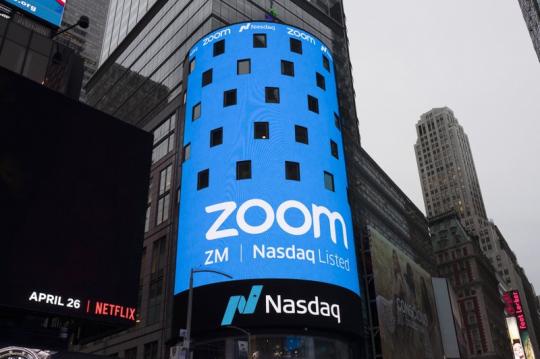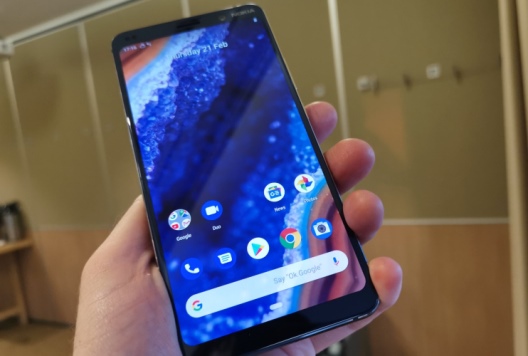
Zoom: Another Quarter of explosive growth during pandemic
"Zoom quickly emerged as the most accessible videoconferencing service"
Zoom’s videoconferencing service is deepening its integral role in life during the pandemic as tens of thousands more businesses and other users pay for subscriptions to get more control over their virtual meetings.
The surge in paying customers enabled Zoom to hail another quarter of explosive growth. The company on Monday reported that its revenue for the May-July period more than quadrupled from the same time last year to $663.5 million, boosted by a steadily rising number of users converting from the free to the paid version of Zoom’s service.
Zoom finished its fiscal second quarter with 370,200 customers with at least 10 employees, a gain of about 105,000 customers from the end of April. Just a year ago, Zoom only had 66,300 customers with at least 10 employees paying for subscriptions.
All that money pouring in helped Zoom earn nearly $186 million, or 66 cents per share, during its latest quarter, up from just $5.5 million at the same time last year.
“Organizations are shifting from addressing their immediate business continuity needs to supporting a future of working anywhere, learning anywhere, and connecting anywhere on Zoom’s video-first platform,” Zoom CEO Eric Yuan said.
Investors have latched on to Zoom too. After having already increased by fivefold so far this year, Zoom’s stock price is poised to climb to even loftier heights. The exuberant response to its quarterly report lifted the company’s shares by nearly 23% in Monday’s extended trading.
If the stock follows a similar arc during Tuesday’s regular trading session, Zoom for the first time will boast a market value of more than $100 billion — exceeding the combined value of two-storied automakers, General Motors and Ford, and two major airlines, American and United.
Back in early June, Zoom warned that it might suffer a wave of subscriber cancellations during the second half of the year if efforts to contain the spread of the novel coronavirus allowed more workers to return to offices. But the ongoing outbreak has prompted many major employers to keep their offices closed through the rest of the year and possibility into next summer, a development that could propel Zoom to even greater heights.
In a show of confidence, Zoom raised its revenue projection for its fiscal year ending in January to nearly $2.4 billion, up from roughly $1.8 billion that the San Jose, California, company predicted in early June. The forecast is now more than double the $910 million revenue that Zoom had anticipated as it began its fiscal year.
Zoom has been thriving largely because the worst pandemic in a century shut down large parts of the economy in March, with employers shuttering their offices and schools closing their campuses. That forced millions of workers and students to hop on to Zoom and other videoconferencing services to get their jobs and schoolwork done.
Zoom quickly emerged as the most accessible videoconferencing service, cementing itself as the pandemic’s most popular place to connect remotely for everything from virtual cocktail parties to complex court hearings, in addition to the daily grind of work.
The sudden demand seemed to catch Zoom off guard initially, leaving its service vulnerable to hackers and mischief-makers who exploited security weaknesses to barge into or snoop on meetings. Zoom says it believes it has closed most of the loopholes and eventually won back some school districts that temporarily abandoned the service because of security concerns.
More recently, Zoom suffered a major outage on the same say many schools were resuming online instruction after a summer break. Although the outage only lasted a few hours, the breakdown heightened awareness about society’s increasing reliance on Zoom.
source:AP
Also Read:
WALMART AD REVENUE COULD QUICKLY JUMP IF TIKTOK BID SUCCEEDS
ELON MUSK'S NEURALINK PUTS COMPUTER CHIPS IN ANIMAL BRAINS
FACEBOOK TO SOON LINK YOUR ACCOUNT WITH NEWS SUBSCRIPTION
GLOBAL ONLINE SMARTPHONE SALES TO REACH NEW HIGH IN COVID YEAR
ONEPLUS CLOVER: THE UPCOMING CHEAPEST ONEPLUS SMARTPHONE
HUAWEI FOCUSING ON CLOUD BUSINESS WHICH STILL HAS ACCESS TO U.S. CHIP
JAPAN’S ‘FLYING CAR’ GETS OFF GROUND, WITH A PERSON ABOARD
WORLD’S FIRST VIRTUAL ART MUSEUM VOMA SET TO OPEN IN SEPTEMBER
APPLE TO LAUNCH ITS OWN WEB-BASED SEARCH ENGINE






